Organized cultural, historical tours finding favor with travelers, residents
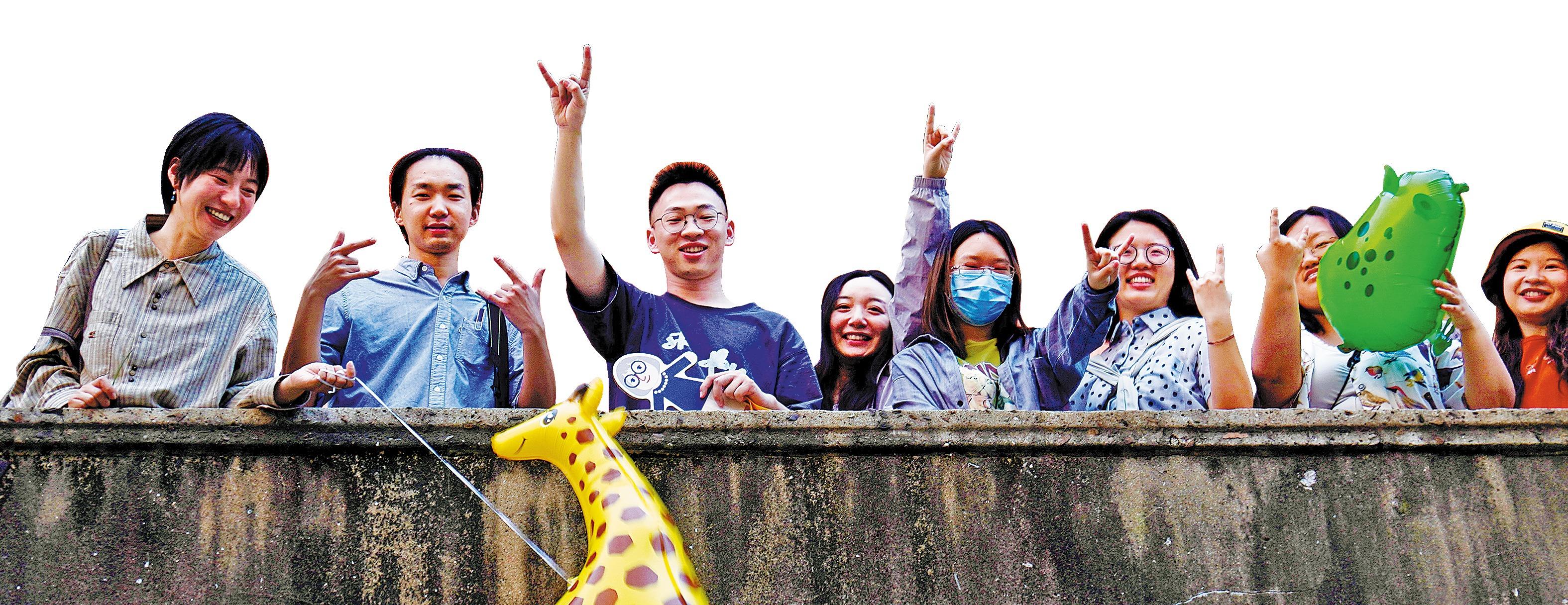 People pose for a photo during a city walk in late May around Shunchang Road in Huangpu district, Shanghai. (PHOTO PROVIDED TO CHINA DAILY)
People pose for a photo during a city walk in late May around Shunchang Road in Huangpu district, Shanghai. (PHOTO PROVIDED TO CHINA DAILY)
For Fang Rui walking the streets of Nanjing, the capital of Jiangsu province, and taking in the buildings and culture of the historical city is almost a daily routine.
Born and raised in Nanjing, the 28-year-old works as a landscape designer in the city after studying overseas for several years. After she returned home she found that walking through the city, visiting and observing cultural and historical sites, gave her life new meaning.
In May, Fang organized a free city walk for around 50 people who came from all over the country to experience a deeper connection with Nanjing.
The city-walk pastime of following planned routes to explore a city's history, culture and urban environment originated in London. The pastime is now attracting a growing number of followers in China, with many young people taking part.
The scale of the trend is hard to measure, but widely shared social media posts document different routes in various metropolises with detailed descriptions and pictures.
On Xiaohongshu, a lifestyle-sharing platform, the hashtag "Holiday citywalk" has more than 470 million views.
Data from Tongcheng Travel, a travel agency based in Suzhou, Jiangsu province, shows that travel searches related to "city walk" increased by 108 percent in July from the previous month. Walking routes in Beijing, Xi'an, Shaanxi province, Chengdu, Sichuan province, Suzhou and Changsha, Hunan province, have attracted great interest from young travelers.
For tourists as well as locals not fully familiar with a city's history and culture, the organized walks are an authentic and immersive experience. Walk organizers provide the information and are passionate and care about a city's cultural heritage. They also have a more personalized and deeper understanding of their city, which goes beyond just visiting iconic landmarks.
Different to regimented travel, where people try to visit as many places as possible in the shortest amount of time, city walks allow people to linger and absorb the surroundings.
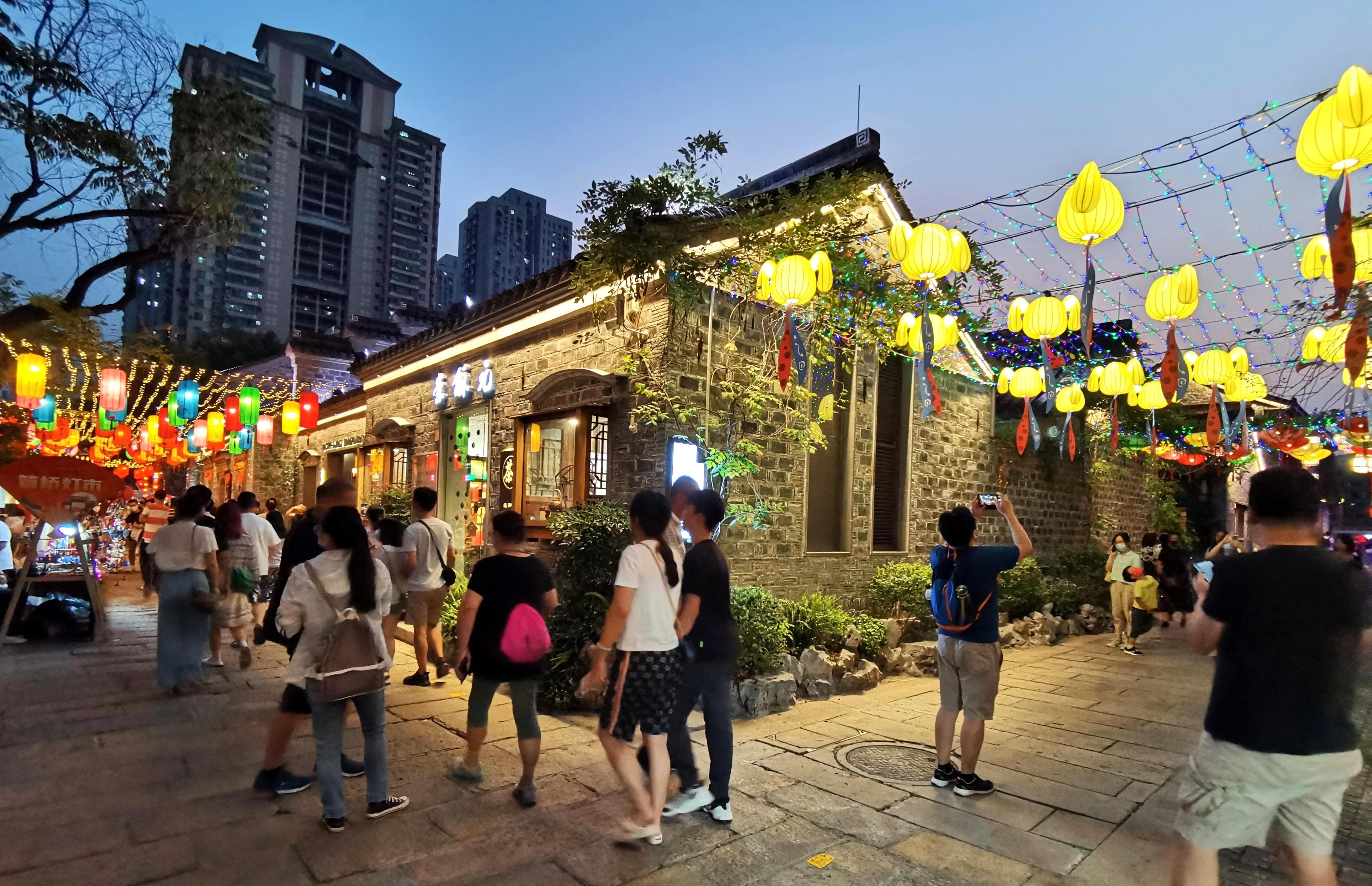 Visitors wander through Cinna Lane, or Xinan Li, in downtown Nanjing, capital of Jiangsu province. (PHOTO PROVIDED TO CHINA DAILY)
Visitors wander through Cinna Lane, or Xinan Li, in downtown Nanjing, capital of Jiangsu province. (PHOTO PROVIDED TO CHINA DAILY)
Bonding with city
Fang's organized walk in May through Nanjing's Qinhuai district renewed her bond with the city and helped the tour participants better understand its cultural heritage in a tangible and interesting way.
She chose to walk in Cinna Lane, or Xinan Li, a tourist area that is not as popular or famous as other Nanjing landmarks such as Fuzimiao Confucius Temple or Sun Yat-sen Mausoleum. The district has preserved various historical buildings, with the most well-known being the former residence of the scholar Gan Xi, which was built during the reign of the Qing Emperor Jiaqing (1796-1820). In terms of its grand scale and layout, it is believed to be the largest and most complete ancient residential building compound in China.
The walk began at 10:30 am on May 28 and lasted about 90 minutes, with Fang's group covering a distance of 3.91 kilometers. Two ancient sites in Pingshi Street, the main historical thoroughfare in Cinna Lane area, are worth exploring, she said.
One is the Daqiao Bridge located at the street's northern end, where writers and poets gathered in ancient times during Lantern Festival in the first lunar month.
The other is a Jiangxi Guild Hall, also known as a Wanshou Palace, on Pingshi Street, which was said to be built for the birthday celebration of Empress Dowager Cixi (1835-1908) during the Qing Dynasty (1644-1911).
During urban renewal, residents living in the old buildings along Pingshi Street were moved out, Fang said, but the historical structures were left standing. No. 89 residential building, constructed in the Republic of China era (1911-49) and located at the intersection of Pingshi Street and Pingzhang Alley, remains intact. Its weathered iron gate features an old-fashioned lion lock and symmetrical double doors are embedded in the horsehead wall. The features convey a feeling of stepping back in time.
"One of the aims of our city walks is to also let participants become witnesses to the transformation of the city itself," Fang said.
"They may propose their own ideas about the future urban development of a historical neighborhood," she said, adding this makes them feel part of the city and shows they care about the local community, the living environment and "the rapid process of urbanization".
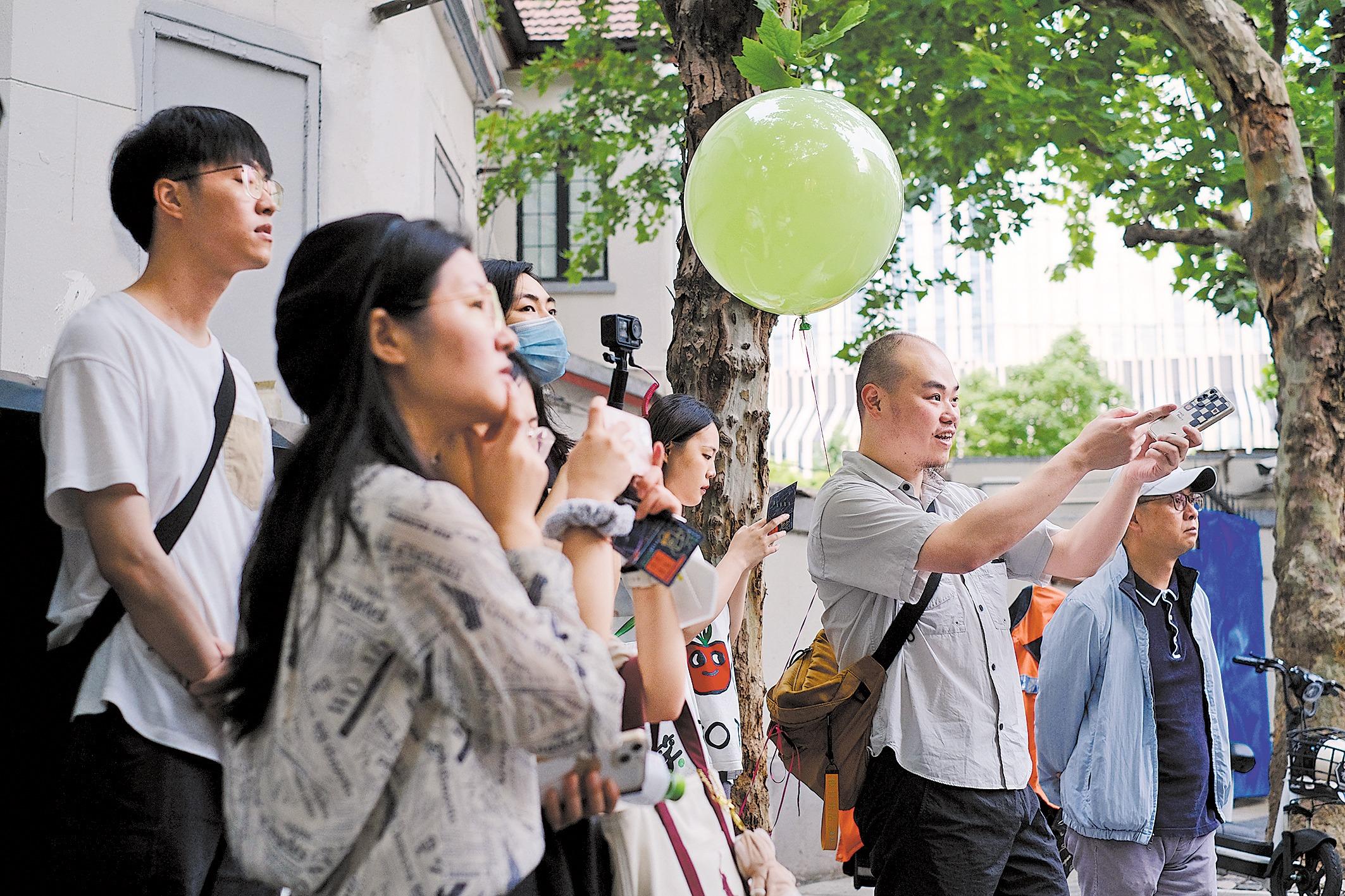 City walkers explore historical alleyways in Shanghai in late May. (PHOTO PROVIDED TO CHINA DAILY)
City walkers explore historical alleyways in Shanghai in late May. (PHOTO PROVIDED TO CHINA DAILY)
Fang, who went to an elementary school near Pingshi Street, said the area used to be a labyrinth of alleys where houses were internally partitioned off to allow for more occupants.
However, many of the buildings had structural damage and hygiene problems, and in 2009 a restoration project began.
The district government restored 63 buildings listed under cultural relic protection. Some other old buildings that did not have such protection were also preserved through partial restoration work, according to the city's historical and cultural street development company.
"There were many lively scenes in this neighborhood about 20 years ago, such as the locals starting their day by flocking to the market to buy fresh vegetables. The alleys teemed with people pedaling bicycles, and various stalls that were on roadsides have now vanished," Fang said.
"Though the area is quite tidy now and the old buildings along the street have retained their original appearance, the hustle and bustle of city life seems to have gone in these alleyways. I feel a bit sad about that."
The balance between urban development, retaining the appearance of historical buildings and allowing people to live in historical areas may need more consideration, she believes.
After walking the streets and alleys of Cinna Lane, Fang and her group couldn't resist a pidu (pork rind) noodle shop across from the No. 89 building on Pingshi Street.
"It was near noon, and the tantalizing aroma of boiled pork rinds filled the air and drew us inside," she said.
"I noticed that the shop belonged to an old chain of local gourmet restaurants in Nanjing. By noon, many residents who had once lived nearby had come to taste the authentic flavor of the fresh pidu noodles on the street corner.
"It was that moment that touched me. By preserving a few local noodle or pancake shops, the locals' memories of their past lives were revived. Even if the neighboring areas have been completely commercialized, their memories of the old town can still be kept."
Designing city-walk routes like Fang's require time and effort. Fang said she spent about a month researching routes for Nanjing's southern area and adjusted the walking map three times. She believes such routes are worth mapping out as "innovative exploration" helps ensure that tiny changes to urban environments don't go unnoticed.
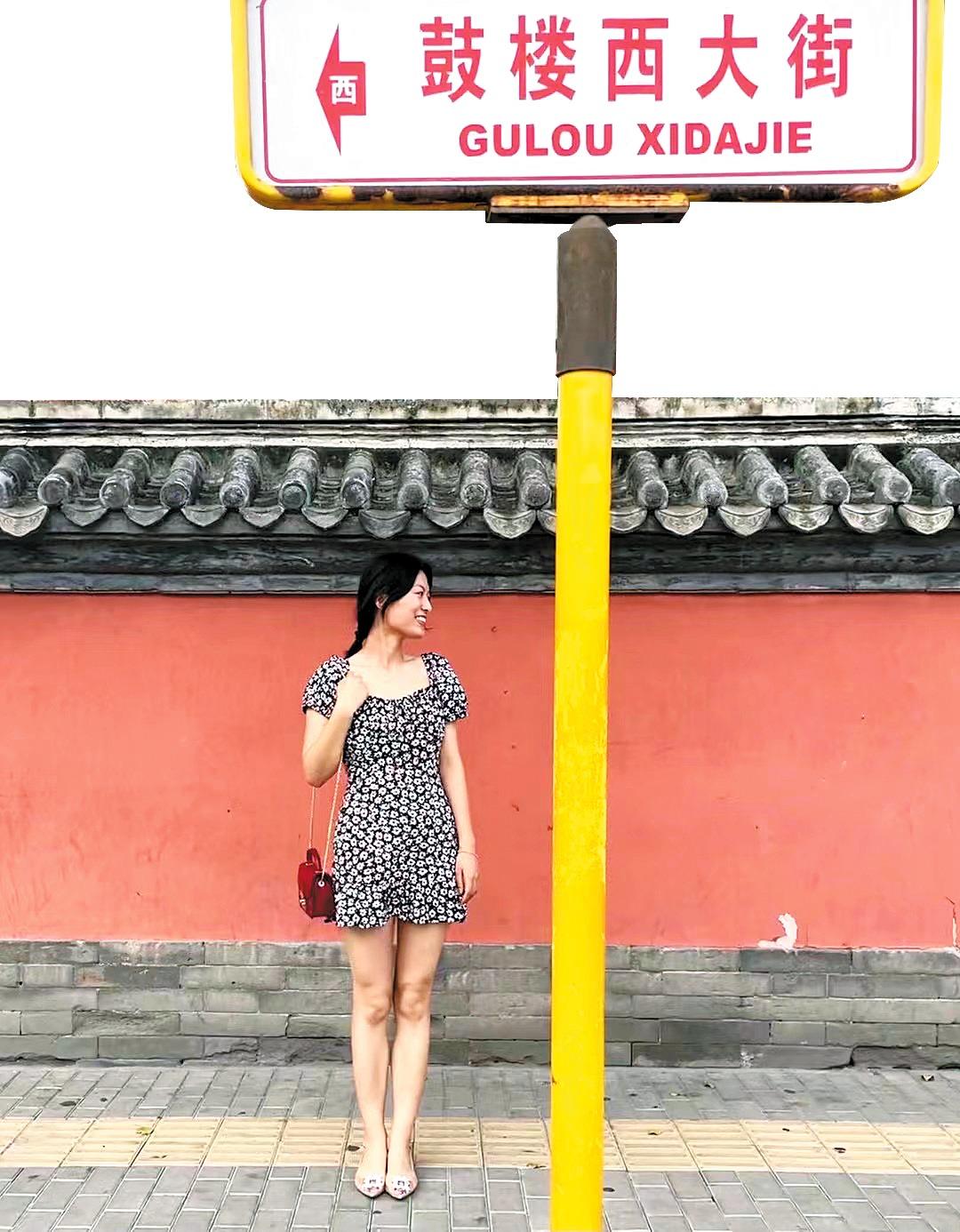 Zha Beibei pauses during a city walk around the Drum Tower and Bell Tower in Beijing in spring. (PHOTO PROVIDED TO CHINA DAILY)
Zha Beibei pauses during a city walk around the Drum Tower and Bell Tower in Beijing in spring. (PHOTO PROVIDED TO CHINA DAILY)
Gateway to relaxation
In addition to the educational aspect of the city walks, they also provide good exercise and can help relieve the stress of the work week.
Many participants say what they like the most about city walks is the physical aspect, adding the activity is a "gateway to the weekend" and helps them relieve work stress.
Zha Beibei, 28, works at China's biggest internet company, Baidu, and has lived in Beijing for almost 10 years. She likes to stroll the streets of the capital after work and at weekends. Her routes are not fixed, but she usually has a rough idea of where she wants to go before she sets out.
"Last year, I started going out regularly for walks," Zha said. "I would have dinner in the downtown area of Beijing every weekend, then take a walk along the streets exploring interesting cafes. This has become my primary form of exercise."
Other outdoor activities such as mountaineering or hiking usually require lengthy periods of walking, but Zha said with city walks she can get her exercise and also have a meal or go shopping.
"It's a leisurely and enjoyable way that involves exercise with multiple elements," she said. "The relaxation is addictive and these journeys of exploration have been very happy experiences."
After the COVID-19 restrictions were lifted in December, Zha's city walks become more detailed and her routes plotted paths to pleasurable pursuits. In January, she set out in search of cocktails on Friday evenings.
After finishing work at around 8 pm, she would have dinner with her friends at a Japanese restaurant near the Drum Tower in Beijing's Dongcheng district or a burger and fries at a nearby eatery. Following the meal, she and her companions would walk for about 10 minutes along Andingmennei Street to reach a cocktail bar.
After that, they would stroll along Drum Tower East Avenue to Houhai Lake to enjoy the night scene, passing by the iconic Drum Tower and Bell Tower.
When they had completed their ramble around the lake, they would stop at a tavern for another drink. At around 11 pm, Zha and her friends would head home.
In May, as summer approached, she took a 3.7-kilometer walk through the streets and alleys of Dongsi subdistrict in Dongcheng district. Along the way, she passed art galleries and bookstores as well as landmarks such as the Peking University Red Building and the former site of the Sino-French University.
On one of her walks Zha was surprised to find a small restaurant that offers biangbiang noodles — a popular dish from Xi'an, Shaanxi — behind the National Art Museum of China. "I had never noticed it before," she said. "The food there is delicious and I have recommended it to my friends who have yet to try it."
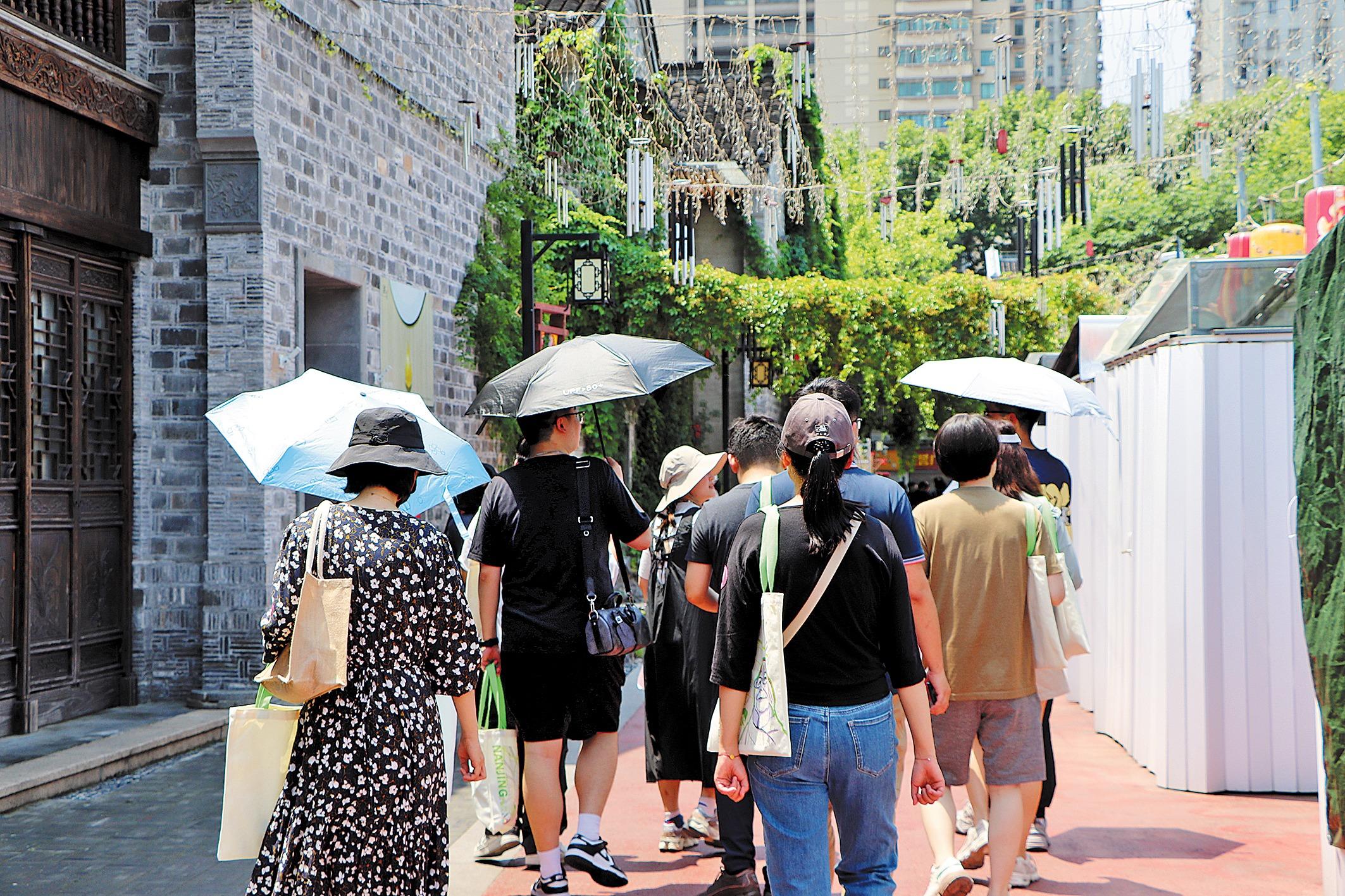 Young people participate in a city walk tour on Pingshi Street in Qinhuai district, Nanjing, in May. (PHOTO PROVIDED TO CHINA DAILY)
Young people participate in a city walk tour on Pingshi Street in Qinhuai district, Nanjing, in May. (PHOTO PROVIDED TO CHINA DAILY)
Closer to home
While city walks are the current trendy pastime, many experts question their long-term popularity.
On travel platforms such as Trip.com, Fliggy and Mafengwo, city walks are the first choice for budget travelers. Some cities have even included them in their cultural tourism plans. Shanghai, ranked the best location in China for city walks, has set up special routes for tourists to experience the old architecture and the modern city.
"In an ever-changing city, its ongoing dynamics are hard to tell unless you walk along a street and see the old houses undergoing changes," said Jin Yi, a researcher with the School of Social and Behavioral Sciences at Nanjing University.
Jin believes the renewed interest in urban environments is largely due to the COVID-19 epidemic, which forced city dwellers to notice what is happening in the vicinity of their homes. Places that may have been only a few kilometers away from residents' homes were suddenly of interest after being ignored for a long time.
"In the post-pandemic era, areas where people live are being paid attention to again," Jin said.
As new technologies erode the idea of proximity, the sense of belonging to a community has also dwindled, he said. City walks help people refocus on what is within proximity of them, and provide residents with a reminder of their urban surroundings.
Residents' "mental maps" of their city can also be reshaped during city walks, Jin said. Awareness of physical surroundings and the nuances of daily life are sharpened by taking walks.
"By observing other people's lives, we gain insight into our own lives, which at least enables us to establish a stronger sense of connection and helps us find a sense of purpose in bustling urban cities," he said.
However, Jin was uncertain about the long-term commercial success of city walks. While the cost of a trip under 100 yuan ($14) is "not that expensive", the walk planners must have a deep understanding of the city.
"The return on investment is difficult to quantify, and the sustainability of city walks as an emerging industry is uncertain," he said.
However, Jin added that, "by understanding and caring about buildings and places that exist in a city", residents can "experience something new and touch the fabric of a city".


